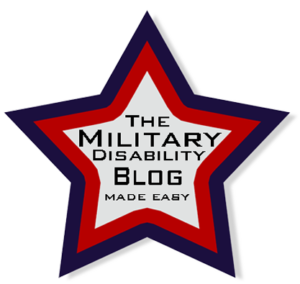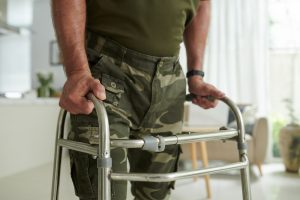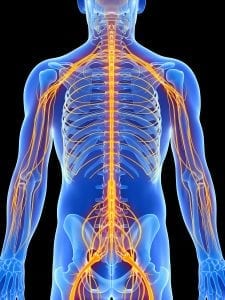Secondary Disability Claims? It’s time to start thinking outside the box…
- Published:
- Last Updated: October 3, 2022

It’s important to remember that in order to be eligible for VA disability compensation and benefits under the law, a disability or condition you suffer from today, must have been caused or made worse by your active duty military service, OR by another service-connected disability rated at 0% or higher.
In this post, I’m going to focus on the latter part of the law: How to prove service-connection using secondary disability claims, specifically, the side effects of any medications you’re taking for other service-connected conditions.
Secondary disability claims are by far the most overlooked part of a veterans VA disability claim strategy, mainly because VSOs and Attorneys lack the medical experience and expertise needed to provide a clear and cohesive strategy.
Now that Military Disability Made Easy is a part of VA Claims Insider, one of the ways we can help you “prove” secondary service-connection is by looking for possible medical “Nexus” links, utilizing our team of medical professionals.
One very clear and well medically documented secondary “Nexus” involves side effects of any medications you’re taking.
For instance, many veterans attempt to connect their Obstructive Sleep Apnea (OSA) secondary to Post Traumatic Stress Disorder (PTSD).
While this strategy does work on occasion, the problem with this secondary linkage between OSA and PTSD is that the medical research is questionable at best, and thus, I fully expect more VA denials than approvals.
BUT…maybe there’s a better way?
Well, there is, and it requires you to think outside the box.
For example, did you know a veteran recently got secondary service-connected for Obstructive Sleep Apnea (OSA) based upon his current service-connected Plantar Fasciitis?
At first, you might be thinking, “Brian, that doesn’t even make sense. How can OSA be caused or made worse by severe heal pain?”
Well, let’s first take a deep-dive into the law and explore how we got here.
Service-Connection (SC) on a secondary basis requires a showing of causation.
A showing of causation requires that the secondary disability be shown to be proximately due to, or the result of, a primary SC condition.
And by the way, to establish causation, the primary disability need NOT already be SC, or even diagnosed, at the time the secondary condition is incurred. Read Frost v. Shulkin (2017) U.S. Court of Appeals for Veterans Claims (Court) HERE.
Example: SC was granted for a back disability with radiculopathy effective in 2015. Credible evidence showed that the Veteran had a 20-year history of back pain and progressively worsening radiculopathy dating back to roughly 2001. The formal diagnosis of radiculopathy was not made until 2010. The Veteran claimed SC for a shoulder disability in 2016, stating that his early symptoms of radiculopathy caused him to lose his balance, fall, and tear his rotator cuff in 2008. He provided a medical opinion linking his rotator cuff tear to a fall, and the fall to sensory impairment and difficulty with proprioception due to early symptoms of radiculopathy.
Result: As the medical opinion establishes causation for the rotator cuff tear in the shoulder due to the radiculopathy, the requirements for SC on a secondary basis are satisfied. Although the radiculopathy was not formally diagnosed until after the fall, the credible evidence adequately establishes a history of back problems and gradual onset of radiculopathy dating back to 2001. A finding of causation does not require that the primary disability be formally diagnosed at the time the secondary condition is incurred. Additionally, although SC had not been established for the back condition and radiculopathy at the time of the fall and subsequent rotator cuff tear, a finding of causation does not require that the primary disability be SC at the time the secondary condition was incurred.
A baseline level of disability, as shown by medical evidence, must be present for an examiner to opine whether aggravation has occurred, and the Veteran’s statement alone, without medical evidence of record showing the baseline level of the claimed disability, is not sufficient to order an examination.
Medical examinations are not to be automatically provided in all cases. Some degree of judgement must be used in determining whether the threshold has been met to schedule an examination.Consider whether satisfactory evidence exists that shows the presence of the claimed disability and its association with the existing SC disability.
A medical diagnosis up front is not always required to show the presence of the claimed disability, or its link to an SC disability, but it is HIGHLY RECOMMENDED…
A generalized statement merely asserting a conclusion that a condition is secondary to an SC disability is not enough to satisfy the Element 3 standard for requesting an examination.
Assess the credibility and merit of the claim prior to ordering an examination. Medical evidence showing a relationship between the primary SC disability and the claimed secondary disability.
The Veteran’s lay statement (personal statement in support of a claim) describing the symptoms present and how they are related to the claimed primary disability.
Medical treatise establishing a known relationship between the primary SC disability and the claimed secondary disability, or a VA regulation or procedure exists that defines a relationship between the primary SC disability and the claimed secondary disability.
Now that we’ve explored a few examples, I’d like to dive into the three evidentiary elements that must be satisfied to prove secondary service connection under the law:
- Lay or medical evidence of a current disability or symptoms
- Evidence of a SC primary disability (which substitutes for the in-service event, injury, or disease), AND
- Indication that the claimed secondary condition may be associated with the primary disability.
The first part (#1) can be satisfied with a veteran’s personal statement, a buddy letter, or any existing medical evidence in service treatment records, VA medical records, or any private medical records.
The second part (#2) can be satisfied with a veteran’s existing service-connected disability rated at 0% or higher.
The third part (#3) can be satisfied with a credible medical “Nexus” opinion from a qualified medical professional.
SC on the basis of aggravation of a non-service-connected disability (NSC) may be specifically claimed or may be considered as a part of the claim for secondary SC as directed at M21-1, Part III, Subpart iv, 6.B.5.a.
BUT, pursuant to 38 CFR 3.310(b) and M21-1, Part IV, Subpart ii, 2.B.5.c, the following additional factors apply when determining whether examination is warranted:
Medical expertise is ultimately required to establish SC on a secondary basis, but the threshold for ordering an examination (aka a C&P exam) is low. However, there is still a threshold that must be met before an examination is provided.
The following types of evidence “may” give credibility to the claim:
Example: Veteran claims stomach problems secondary to his SC heart condition. He indicates that since he began taking prescribed medications two years ago for his heart condition, he has experienced stomach problems to include constipation, pain, and indigestion. There are no specific diagnoses relating to his stomach symptoms noted in the evidence of record.
Analysis: While the Veteran’s lay statement is not sufficient to ultimately prove the claim, it is sufficient in this instance to warrant an examination. The Veteran is competent to describe his symptoms and the possible association of symptoms to his SC condition. Furthermore, his statement appears credible when considering the evidence at hand.
Example: A Veteran submits a statement indicating that he has hypertension secondary to his SC low back condition. Medical evidence of record shows no treatment for hypertension and normal blood pressure readings over the last three years.
Analysis: Although the claimant is competent to describe symptoms of a disability, his statement that he has hypertension secondary to the low back condition is not credible as competent medical evidence in this case is required to show elevated blood pressure readings or establish a diagnosis of hypertension. Although Veterans are competent to attest to their symptoms, they are not generally competent to make their own medical diagnoses. The Veteran could attest to symptoms he experiences associated with hypertension, such as dizziness or headaches, but he is not competent to make medical diagnoses. The reason the medical evidence would be required in this case is because the medical evidence of record shows normal blood pressure readings over the last three years and no diagnosis of hypertension. Consequently, the Element 1 standard requiring medical or lay evidence of a current disability has not been met. The substitute evidence from the Element 2 standard is met on the basis that there is an SC disability, a low back condition, present and the claim is being made on a secondary basis. However, the Element 3 standard is not met because the Veteran has submitted a generalized statement suggesting the conclusion that the hypertension is secondary to the back condition, but there is no specific discussion or evidence correlating the hypertension to the back condition. Additionally, there is no VA regulation, procedure, or medical treatise establishing an association. Because the three evidentiary elements are not satisfied, no examination is warranted.
Okay, enough legal jargon, now back to my earlier example of Obstructive Sleep Apnea (OSA) secondary to Plantar Fasciitis. Let’s explore the facts a bit.
The Veteran provided a personal statement, a “lay statement” under the law, as well as a credible medical “Nexus” letter that cited relevant medical research and literature regarding side-effects of the medications he was prescribed for his severe heal pain, the Plantar Fasciitis.
Weight gain was one of the side effects of the pain management medication he was taking. Medical research studies from the Mayo Clinic were cited in the medical “Nexus” opinion, which clearly met the “showing of causation,” standard BECAUSE the Obstructive Sleep Apnea on a secondary basis was shown to be proximately due to, or the result of, the Plantar Fasciitis.
Obstructive Sleep Apnea has been medically linked to weight gain, which shows causation. Thus, as a result of the veteran’s weight gain, the medical “Nexus” letter stated that the Obstructive Sleep Apnea was “at least as likely as not” to have been proximately due to or the result of the medication side effects, which were taken to manage the pain of his Plantar Fasciitis.
So now I’ve probably got you thinking, what can you possibly connect on a secondary basis due to side effects of any medications you’re taking for your current disabilities?
If you need some help, please send us a note through our “Contact Us” page here on Military Disability Made Easy.
Want to listen to the new VA Claims Insider Podcast? Click HERE now.
*****

Brian Reese is an Air Force service-disabled veteran, and his personal frustration with the VA disability process led him to found VA Claims Insider in 2016, which provides veterans with expert resources for successfully submitting winning VA disability claims. He is also the CEO of Military Disability Made Easy. His eBook, “The 9 Secret Strategies for Winning Your VA Disability Claim,” has been downloaded more than 250,000 times in the past three years and is the #1 rated free VA disability claims guide for veterans. Brian is a former active duty Air Force officer with extensive experience leading hundreds of individuals and multi-functional teams in challenging international environments, including a combat tour to Afghanistan in 2011. Brian is a Distinguished Graduate of Management from the United States Air Force Academy and holds an MBA from Oklahoma State University’s Spears School of Business, where he was a National Honor Scholar (Top 1% of Graduate School class).
Recent Posts
TDRL vs. PDRL—Which is better for disability benefits?
Leukemias and Multiple Myelomas NOW on the Presumptive List
Two MORE Conditions added to the Burn Pit Presumptive List
The 2025 VA Disability Rates are here!
About Us











18 Comments
I recently sent in a claim showing that I was a PPD Reactor on active duty on a Tuberculosis Control Program while active duty 1996-2000. I went through the protocol INh Therapy, Chest xray, etc., no active disease. Then other issues started showing up 7 to 8 years later while I am in the Navy Reserves. I am reporting these issues and they are in my Reserve Medical Record. My current issues are in Navy Reserves record of the IBD. The Active Duty Medical Record shows shows I was exposed to organism that cause the disease on active duty. Now I am dealing with chronic IBD which was found several years later. I did not retire until March 15, 2015. Active Duty 4 years Reserves adding up to the remainder of the time. I filed chronic back issues from my active duty medical record that I claimed that was approved. I have been denied several times due to this infectious disease issues. It is showing now that Military Tuberculosis can affect other areas of the body. How do I proceed in my appeal in filing this issue.
My question is would IBD be a secondary condition that was caused by exposure to the TB active disease on active duty at that time.
Yes, the VA will cover any condition you can prove was caused by your military service, including the TB test. You will want to include full medical records regarding the test and any proof you can find that similar cases of TB exposure can cause IBD. A NEXUS letter from your physician claiming that your IBD is more likely than not caused by the TB test will help support the IBD as secondary to TB.
I was discharged in 1974, since then i have been rated at 60% due to different injuries. My question is in Aug of 2018 after working with my wife in the yard. I noticed my left hand became very swollen and i couldn't move my thumb. Upon going to the VA clinic and after x-rays i have bad case of osteoarthritis. After going to physical therapy my left hand is in pain all day long, except when after using the wax bath the pain is gone for about 1 hour. Since i was given a 30% disability for brachial neuritis can i clain the osteoarthritis as secondary to the barchial neuritis or open a new claim. My other question is Oct of 2018 my va doc noticed a dark spot on my back. since then i have had two biopsy's gone on y back. One came back negative but the other on Aug of 2019 came back as Melanoma. Can i open a claim for the Melanoma.
Osteoarthritis is caused by stress on the joints, so if your neuritis caused abnormal movements that put abnormal stress on the joints, then you can claim it as secondary. You would need to show medical proof of this relationship, and a NEXUS letter from your physician noting this connection would help. It's been too long since your military service to claim osteoarthritis on its own.
The same goes for your melanoma. It's been too long since your service for it to be service-connected unless it is secondary to another service-connected condition or on the Presumptive List. Melanoma is not on the Presumptive List.
http://www.militarydisabilitymadeeasy.com/vapresumptivelist.html
http://www.militarydisabilitymadeeasy.com/service-connected.html
Hello!
I filed a claim for Gout secondary to DM II, and after that came back denied, I filed for Gout secondary to to Hypertension medication (Dueretics). However that came back denied as well. The VA basically said that they took the word of the C&P examiner over my doctors nexus statement.
I am in the process of getting an IMO to further substantiate my case, but in your opinion do you think I should get another nexus statement as well? The one my private doctor provided was not very strong, but I am thinking if the IMO is strong maybe I will just go with that. Your opinion? Fyi…instead of appealing I am submitting a new claim. Thanks!
A NEXUS and an IMO basically serve the same purpose, the NEXUS letter just formats it in a way the VA really likes. If your original NEXUS wasn't strong, you might as one from the doctor performing your IMO and submit both the letter and medical exam results.
Thanks for your feedback!
I was recently diagnosed with complex sleep apnea which requires that I use a CPAP and oxygen generator. I currently receive compensation for the following;
osteoarthritis of the acromioclavicular joint and right shoulder strain claimed as degenerative joint disease right shoulder 10% Service Connected 03/14/2008
cervical strain associated with C5/C6 foramina narrowing claimed as pinched nerve, C-5 10% Service Connected 05/01/2012
scar, s/p cervical spine surgery 0% Service Connected 03/08/2012
radiculopathy C6 nerve root, right upper extremity (dominant) 20% Service Connected 03/19/2010
Would the above conditions be a NEXUS for the complex sleep apnea?
There is some evidence that cervical spine conditions can cause sleep apnea in certain populations. Check out the compilation of studies in NCBI. If your circumstances match these studies, you have a solid case. You'll also want to get an official NEXUS letter from your physician linking the conditions.
https://www.ncbi.nlm.nih.gov/pmc/articles/PMC3940806/
I have had an undiagnosed mental condition since my preteens which resulted in me being hospitalized for a gunshot womb to the abdomen in a suicide attempt around 14 years old. My medical records showed a gunshot womb in a suicide attempt where no criminal changes were filled because it was documented as a suicide. I joined the U.S. Army on August 28, 1998 with the suicide listed in my medical records without a medical waiver which a documented suicide attempt should have disqualified me from entering the Army. I discharged from the U.S. Army with an “Other Than Honorable Condition” title because I requested to exit the military before scheduled date to ETS. At the time I believe the military made my condition worse and I actually went into a suicide watch once while in the military. Currently I’m on disability for OCD/schizoaffective disorder and development of blood clotting Deep vein thrombosis and pulmonary Embolisms twice were I was hospitalized and almost died. I’m taking a blood thinner daily for the rest of my life and a psychotropic drug for OCD and schizoaffective disorder. I inquired about a military discharge upgrade but was told I needed thousands of dollars upfront in order to have an attorney take my case. After reading many articles on how servicemen have file law suits against the government for wrongful discharge I decided to give this another chance to obtain some VA benefits.
Up until recently I was told about a character evaluation to upgrade my military discharge so that I can obtain some VA benefits. I’m not sure if I could sue the government for accepting me with a undiagnosed mental condition that lead to an suicide attempt although a suicide attempt is considered a disqualification, without a medical waiver however, my medical records did show a suicide attempt and my recruiter asked about it and I informed him of it obviously it was documented but somehow he managed to get me in. I’m more concerned with getting additional disability benefits than a law suit or discharge upgrade but if it requires me to take those routes first I would be willing to but I not sure how to go about the whole process and that why I need legal counseling. I would hate to waste your time and mines so Im compel to ask before getting into the merits of a case as tell you I have not filed any paperwork to obtain benefits nor to get a discharge upgrade. Based on all I have stated, do you think you can help me?
You have a tough case and will definitely benefit from official legal support. We are, unfortunately, not in a position to take a case in a legal capacity. However, there are a number of great lawyers who might take your case. I suggest reaching out to and talking with a few different military disability lawyers. They'll offer free consultations and will be able to give you a better idea of what the case would entail and cost.
I hyperextended my left knee in Iraq in 2004. I had an LOD completed and filed a claim with the VA. They denied me based that the injury was not chronic. I did have pain but did not think anything of it. Until it worsened. In 2016, I went to a orthopedic surgeon and he diagnosed me with Chondromalcia Patellae in the left knee. I was also experiencing shoulder pain and was diagnosed with osteoarthrhtiris in my right shoulder.This diagnosis did give me a permanent profile in the military. Will I be able justify and successfully reopen my claim concerning the left knee?
Are you a Reservist? If so, then the VA will rate your officially diagnosed conditions as long as you can prove that they occurred in the line of duty. Since it has been so long since your injury in Iraq, trying to connect the Chondromalacia Patellae with that injury will be difficult, but if you could connect it to your more current service, that could have a higher chance of success. If the Iraq injury is your only chance, then you will need a solid NEXUS letter showing that the diagnosis was directly caused by that incident.
Why do the raters have to be able to distinguish between PTSD and and major depressive disorder being a comorbid…ie intertwined or separate??
Because PTSD is the result of a specific traumatic event, the VA has different rules regarding the diagnosis and service-connection of PTSD than it has for all other mental health conditions. As far as rating goes, all mental health conditions are rated on the same system, so differentiating really doesn't matter. But it does matter as far as diagnosis and service-connection.
http://www.militarydisabilitymadeeasy.com/ptsd.html
I have been denied osa obstructive sleep apnea in connection to ptsd with bipolar. I have supporting documentation from doctor, and also am actively wearing a device. What should I do when I refile claim ?
The thing that will most likely help you the most is a Nexus Letter from your sleep specialist stating that the condition is “more likely than not” the result of your PTSD. You can also submit medical studies that show a link between the conditions, but there is already plentiful precedence from the BVA showing a relationship between the conditions, so focusing your case on the fact that yours is more likely to be the result of your PTSD than any other factor will be the most helpful.